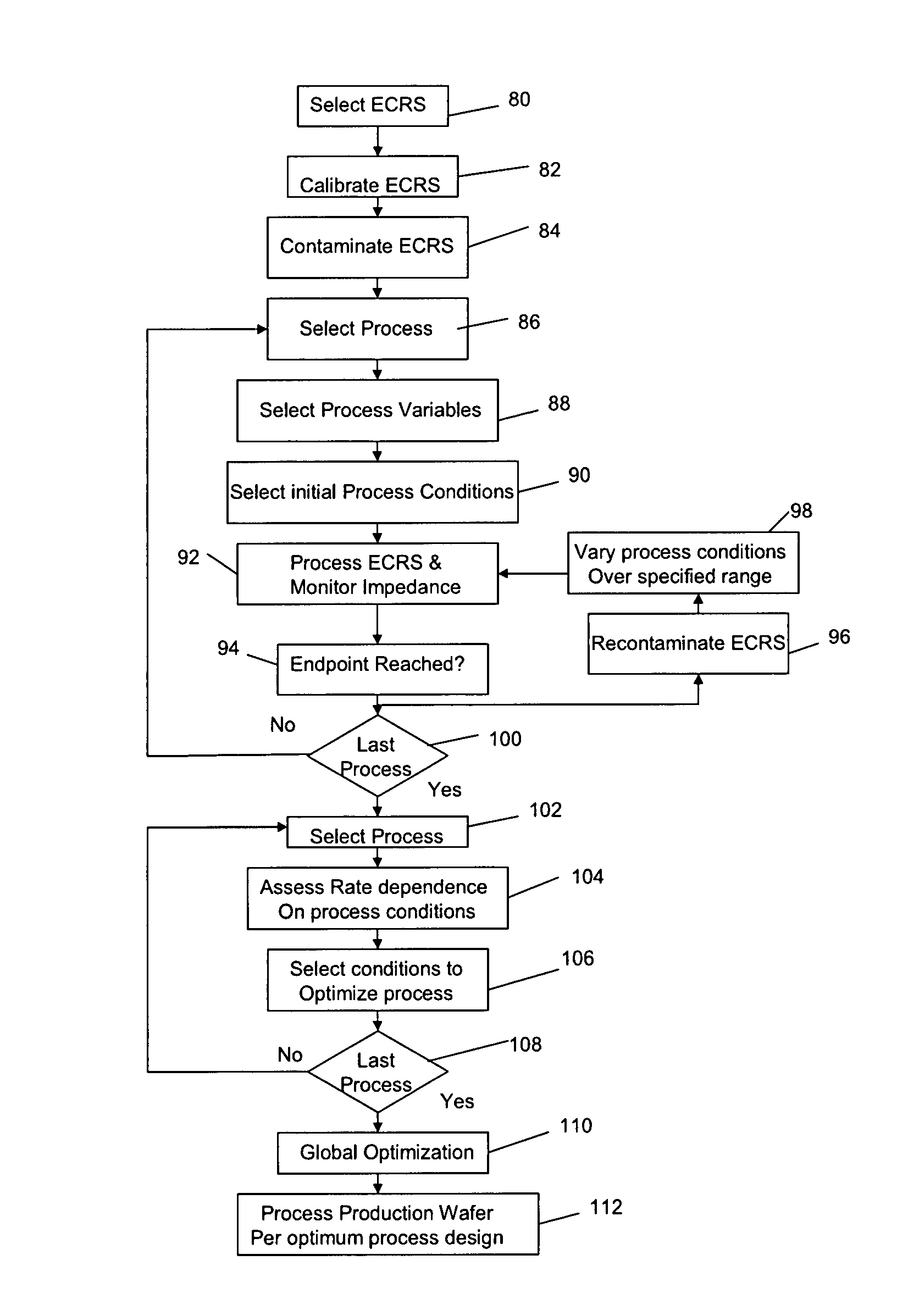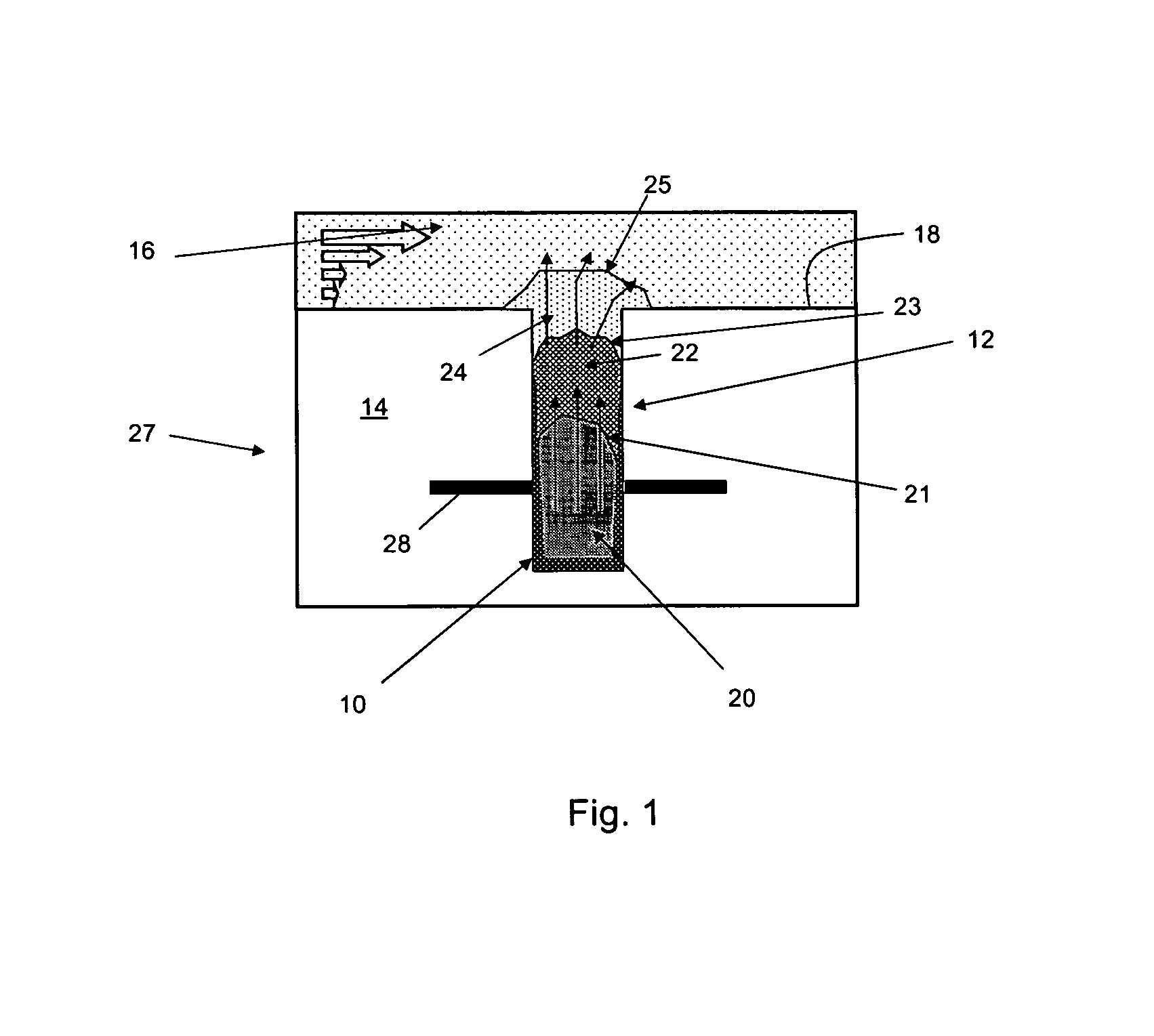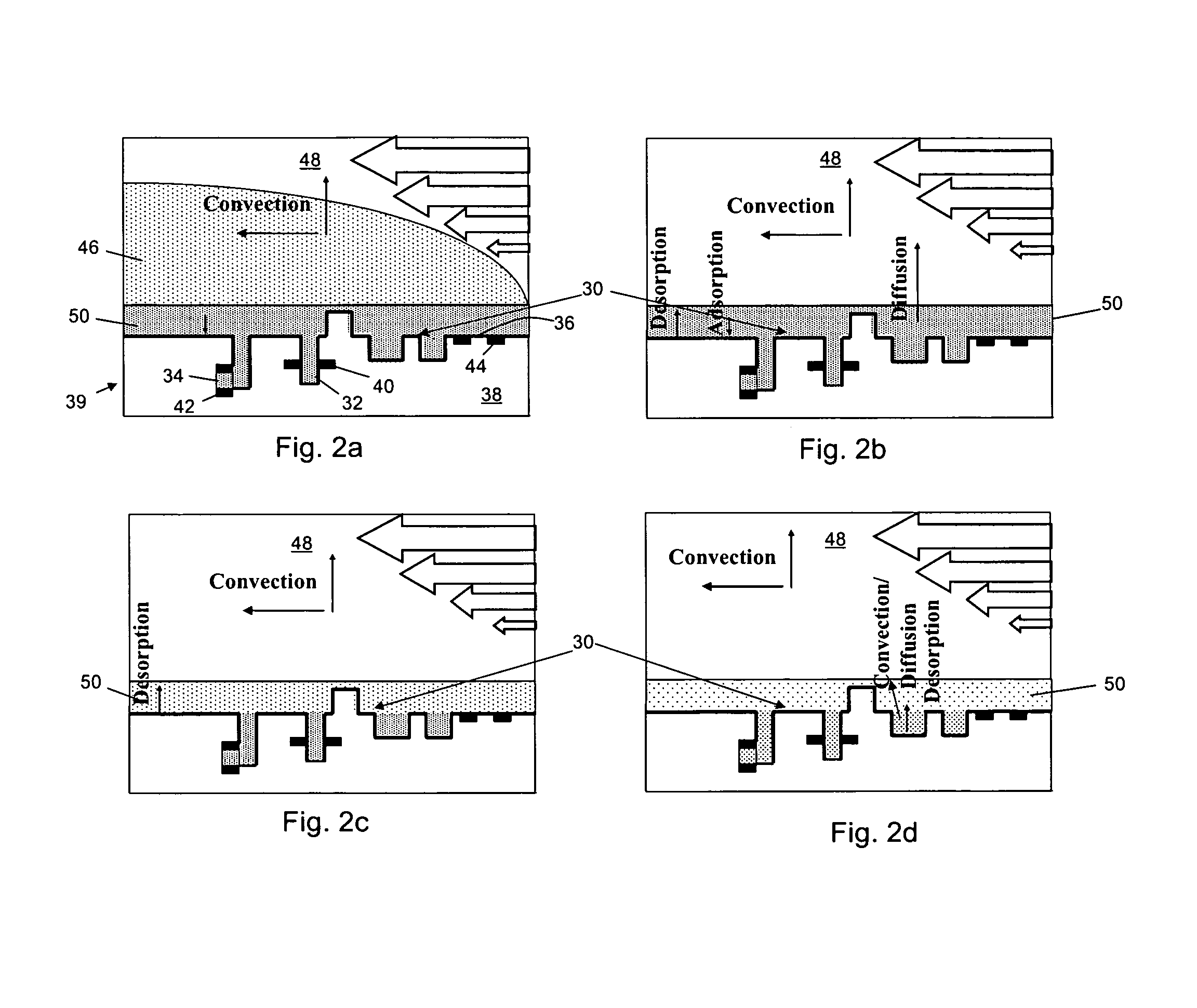Method of design optimization and monitoring the clean/rinse/dry processes of patterned wafers using an electro-chemical residue sensor (ECRS)
a technology of electro-chemical residues and design optimization, applied in the direction of instruments, material impedances, fault locations, etc., can solve the problems of excessive use of chemicals, water and energy, difficult cleaning and drying, and small void drying, so as to improve the cleaning, rinse and dry process and save solution and energy.
- Summary
- Abstract
- Description
- Claims
- Application Information
AI Technical Summary
Benefits of technology
Problems solved by technology
Method used
Image
Examples
Embodiment Construction
[0028]The present invention provides a method of optimizing the clean, rinse and dry processes during the manufacture of ICs, MEMS and other micro-devices to conserve solution e.g. cleaning solution, ultra pure rinse water or drying gas, and energy subject to completing each process within a time constraint. All high aspect ratio void structures such as vertical micro-features and buried micro-channels and micro-surfaces formed in or on a dielectric will be generally referred to as a ‘micro feature’ hereafter. Void micro features have a void space no greater than 10 microns and more typically 3 nm to 3 microns. A surface micro feature is no greater than 100 microns in width and typically 300 nm to 30 microns.
[0029]An electro-chemical residue sensor (ECRS) monitors either remaining contamination or contamination being removed from micro features formed in or on a dielectric film on the patterned wafers. The ECRS provides for in-situ and real-time measurement of residual contamination...
PUM
| Property | Measurement | Unit |
|---|---|---|
| width | aaaaa | aaaaa |
| width | aaaaa | aaaaa |
| thickness | aaaaa | aaaaa |
Abstract
Description
Claims
Application Information
 Login to View More
Login to View More - R&D
- Intellectual Property
- Life Sciences
- Materials
- Tech Scout
- Unparalleled Data Quality
- Higher Quality Content
- 60% Fewer Hallucinations
Browse by: Latest US Patents, China's latest patents, Technical Efficacy Thesaurus, Application Domain, Technology Topic, Popular Technical Reports.
© 2025 PatSnap. All rights reserved.Legal|Privacy policy|Modern Slavery Act Transparency Statement|Sitemap|About US| Contact US: help@patsnap.com



